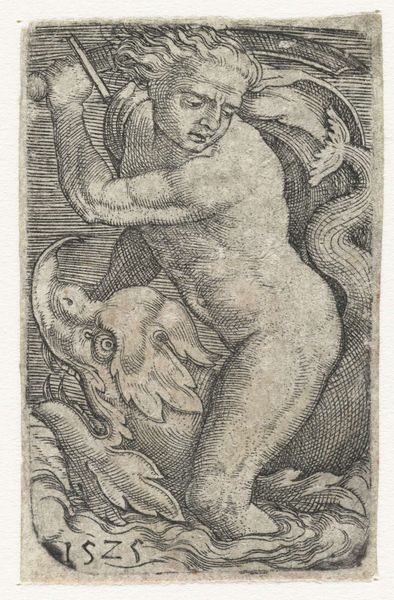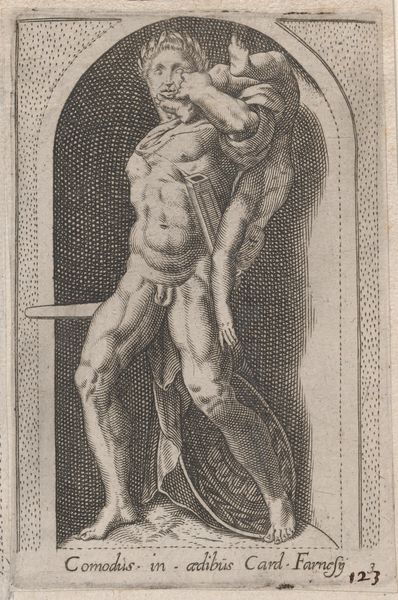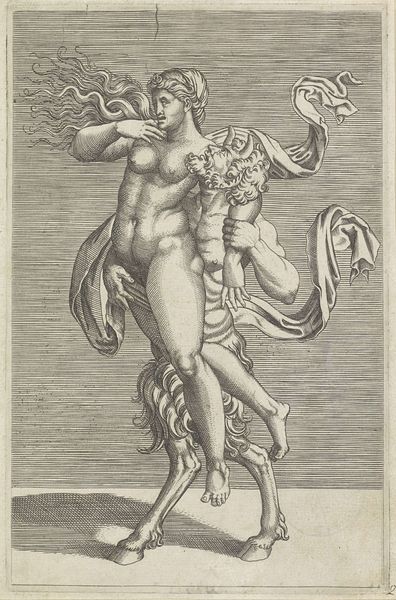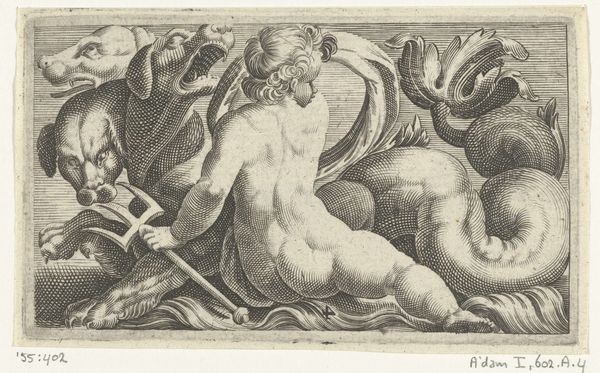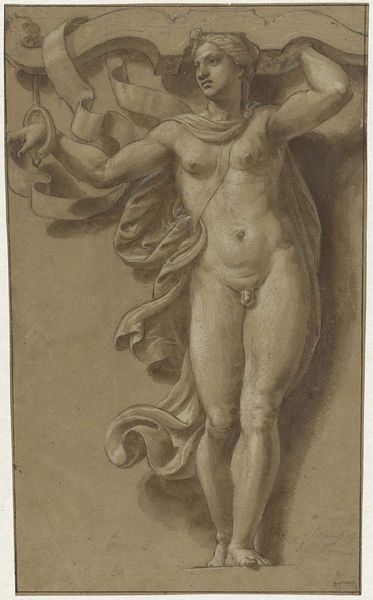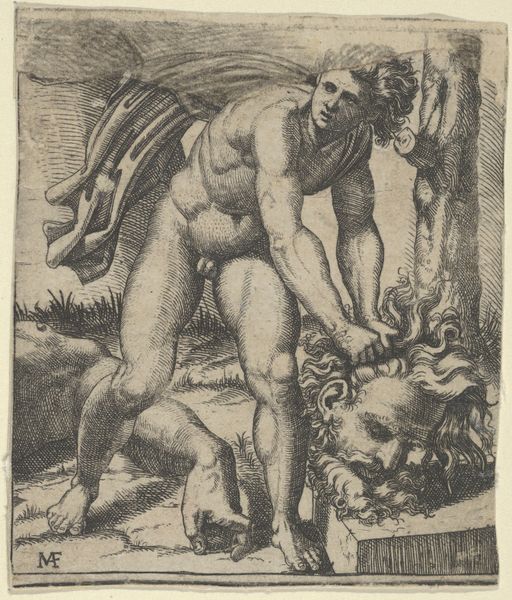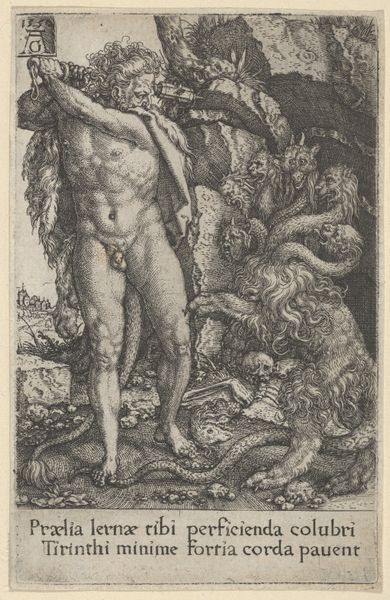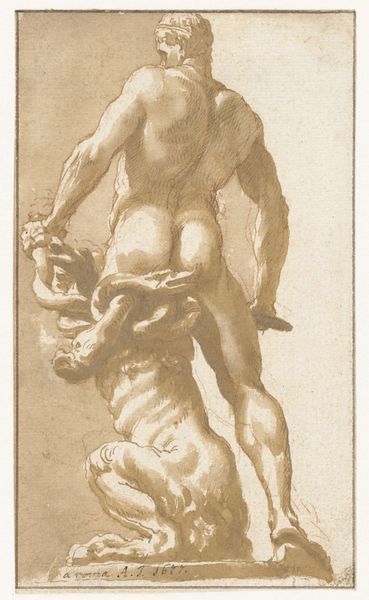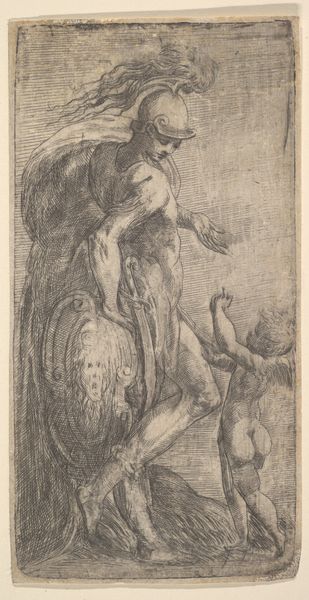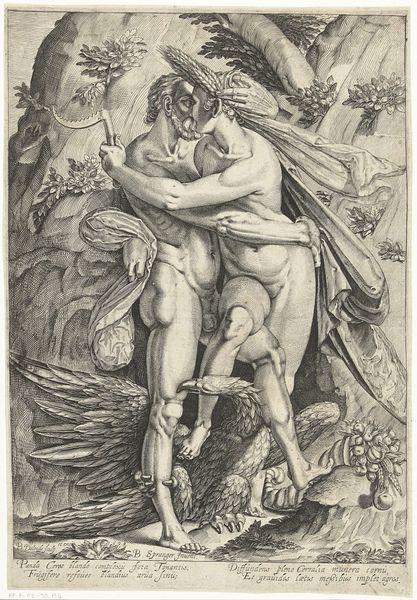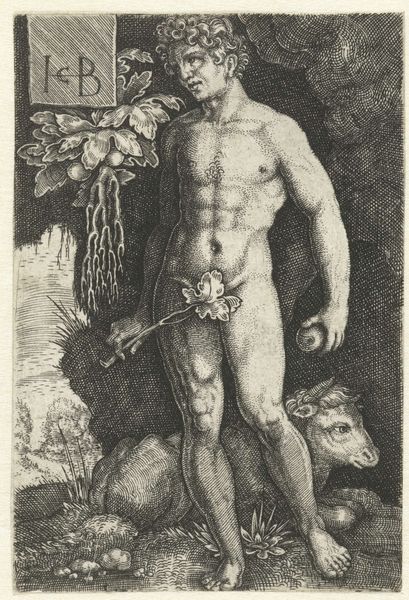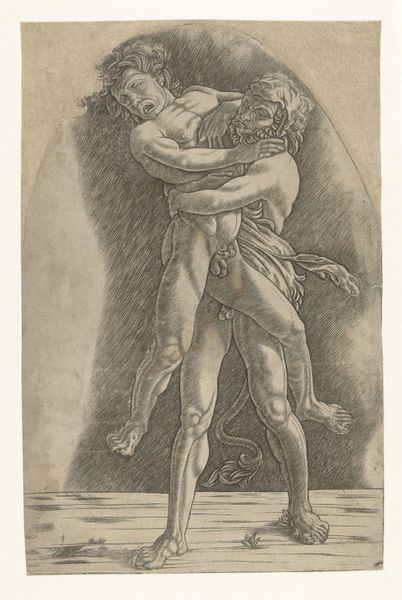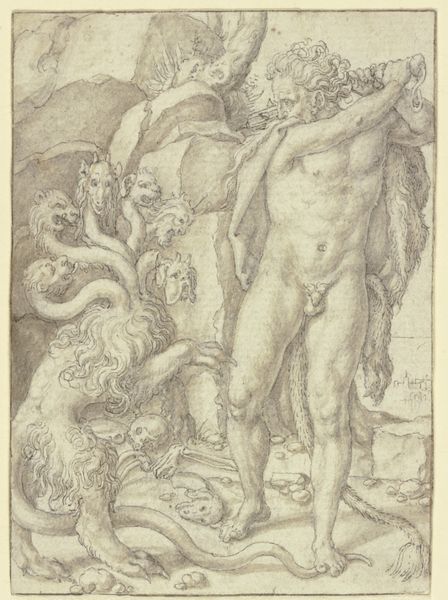
engraving
#
charcoal drawing
#
figuration
#
portrait drawing
#
history-painting
#
italian-renaissance
#
nude
#
engraving
Dimensions: height 285 mm, width 200 mm
Copyright: Rijks Museum: Open Domain
Editor: This is Andrea Mantegna’s "Faun Fighting a Snake," an engraving from around 1500-1550, currently at the Rijksmuseum. The image has this incredibly dramatic tension, doesn't it? All that cross-hatching really adds to the feeling of struggle. How do you interpret the symbols in this work? Curator: It’s interesting you say tension. Yes, this faun, locked in mortal combat, speaks to something deeper about the era's understanding of man versus nature, or perhaps, order versus chaos. Consider the snake: an ancient symbol of temptation, but also of healing and knowledge. What do you think Mantegna is conveying by placing this creature in opposition to the faun? Editor: Well, maybe it’s a battle against instinct, or the darker parts of human nature? The faun is using a club, signifying brute force, but he also seems vulnerable. Curator: Exactly. This is where cultural memory comes into play. The faun, a being of the woods, now confronts the serpent – a challenge to his primal dominion. It echoes earlier tales of heroic struggle. And notice how the cape flows – like a banner declaring his ordeal, or maybe something he has acquired that is a trophy for some great deed, yet it constricts him as much as sets him free. What emotional impact does this add? Editor: The cape adds a feeling of dynamism, almost like the faun is surging forward even though he is caught up in combat. He's both strong and ensnared, battling an external enemy while grappling with an internal conflict. Curator: Precisely! And that internal conflict is made visual through external symbols, inviting us to examine the enduring struggle within ourselves. So it's a beautiful paradox. Editor: That connection of symbolism to the psyche is really powerful! It has definitely provided some food for thought.
Comments
rijksmuseum about 2 years ago
⋮
Although the inscription indicates ‘Hercules’, the pointed ears of the figure reveal him to be a faun (forest god). The engraving is based on a drawing by Andrea Mantegna in the British Museum collection, in London. Besides following the master’s design, the anonymous engraver also emulated his robust style of drawing with thick, closely placed parallel lines.
Join the conversation
Join millions of artists and users on Artera today and experience the ultimate creative platform.
